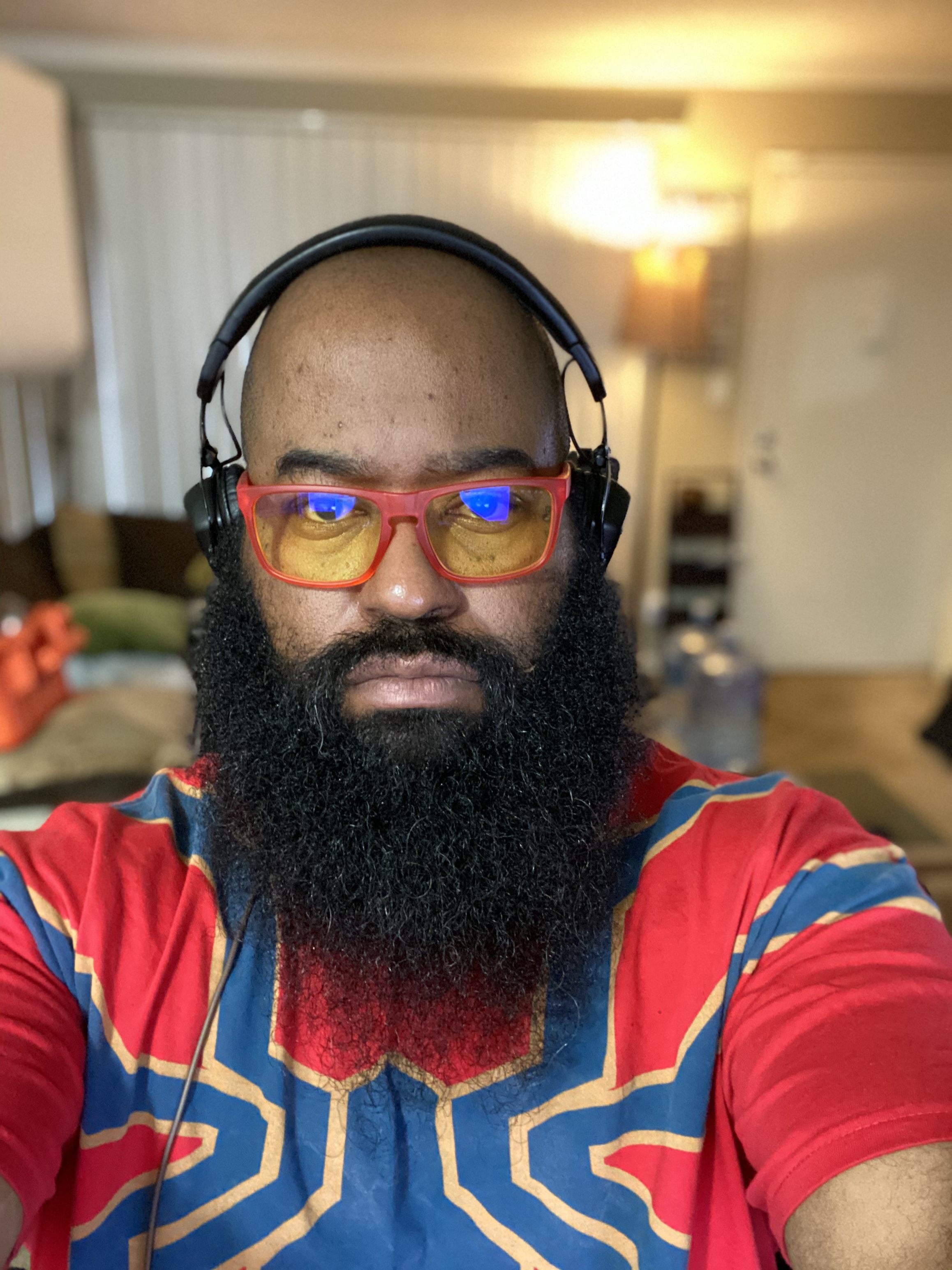Android Central Verdict
Beats Solo Buds are a compelling take on pocketable, true wireless earbuds. Impressive battery life and fewer landfill components make for a case that is one of the smallest around, and Beats’ newer balanced sound makes these well worth looking at—especially at $80.
Pros
- +
Case size
- +
Sound quality
- +
Battery life
- +
Price
Cons
- -
No charging cable included
- -
No IP rating
Why you can trust Android Central
Well, this is different! In a world where companies talk a lot about sustainability, the new Beats Solo Buds walk the talk in an unexpected way: the case has no built-in battery for recharging, cutting down on toxic battery landfill waste. But fear not, audio friends! The buds themselves will give you 18 hours of playback, so you should be able to power through whatever your days call for without skipping a beat.
But is this a "feature" or a compromise? I'll make that clear, along with what else you are or aren't getting in Beats' newest, relatively inexpensive earbuds.
Beats Solo Buds: Price and availability

Beginning June 18th, Beats Solo Buds are available to order in Transparent Red, Storm Gray, and Matte Black from Apple.com and authorized resellers for $79.99.
They’ll be available in Apple Store locations and other brick-and-mortars beginning June 20th. The Arctic Purple version I have for review will be available exclusively online or in-store from Apple or Target.
| Categories | Beats Solo Buds |
|---|---|
| Connectivity | Bluetooth 5.3, Class 1 |
| Driver | 8.2mm, dual element diaphragm transducer |
| Codec Support | SBC, AAC |
| Battery life | 18 hours continuous playback |
| Charging | USB-C; Fast Fuel: 5 mins = 1 hour playback |
| App support | Android, iOS (OS-level support) |
| Colors | Transparent Red, Storm Gray, Matte Black, Arctic Purple |
Beats Solo Buds: What's good

*Note: the review unit sent to me is a pre-production device.
With the Solo Buds, Beats continues its trend of not beating you down with booming bass. That isn’t to say that they don’t deliver on bass and sub-bass, but that this latest iteration of the Beats sound is more accessible to a broader audience.
These Solo Buds also continue Apple’s trend, under the Beats brand, of bringing an audio product to market with native support for Apple and Android features. On Android, that means you’ll have support for Google Fast Pair, multipoint pairing, and Google Find My Device, with additional features like button customization in the Beats app. This is possible because Beats doesn’t use the Apple H1 chip found in the Beats Fit Pro but instead uses its own proprietary platform.
Get the latest news from Android Central, your trusted companion in the world of Android
Though I love all things bass, I treat music like a buffet; the more options, the better. That’s where Beats does great with its newer sound signature—providing tuning that should appeal to those who enjoy everything from classical music to hip-hop. The Solo Buds use the 8.2mm dual-element diaphragm transducers from the Studio Buds Plus, so you’re getting a more neutral, balanced sound than in earlier years. Other than the transducer, the rest of the components and the ergonomics are unique to the Solo Buds.
I listened to a mix of genres to test these out. I started with a couple of tracks to test the soundstage: Paul Simon’s “Diamonds on the Souls of Her Shoes” and Michael Abels’ haunting “Sikiliza Kwa Wahenga,” the main title track from the “Get Out” film’s soundtrack. The Solo Buds have a more “closed back” style architecture, which inherently lessens the airy effect you get with open-back headphones, and despite that, the size of the soundstage was still quite satisfying. Vocals were clear and bright without being as sibilant as Paul Simon can be with some earbuds.
“Violin Duel” from the Chevalier soundtrack is beautiful. The string sections’ attack is well defined, with solid separation throughout the rest of the instrumentation. Because the focus is on clarity with this newer generation of Beats, I also subjected the Solo Buds to the murkiest track known to mankind, Method Man’s “Biscuits,” and enjoyed the full mids, which allowed his vocals to cut through the muddy bass.

They have a larger battery than previous buds because there is no third battery in the case to recharge them on the go. You can plug them into your phone and top off there, but you’ll be draining your phone. The good news is that in my testing with the volume on my Google Pixel 7 Pro at 50% of its max, using the AAC codec and streaming a Spotify 24-hour long lo-fi hip-hop playlist, the Solo Buds lasted a little over 18 hours.
When it comes time to recharge them, you'll need to supply your own USB-C cable. Just place those buds in the case and plug them into the USB-C port on the back of the tiny unit. The Solo Buds do have the 5-minute Fast Fuel feature, which gets you up to an hour of playback, with a full system recharge taking a little under an hour and a half.

Other changes in the buds are due to Beats cutting down the case size. There’s no LED on the case for charging status. Instead, you’ll get different audio tones for charging, pairing, and battery status. There’s also no pairing button on the case, but you’ll just place the buds inside the case and hold the “b” button on either bud for a few seconds to pair them with your device(s). The buttons on the Solo Buds, like previous Beats buds before them, are mechanical, a design element I prefer in most cases.
Some might say that I should have the lack of charging in the case in the “What I don’t like” section, but with 18 hours of playback, I haven’t missed it. Remember that most truly wireless earbuds support between six and eight hours of playback on a single charge.
One final note here. The microphones work well. I made phone calls—because smartphones can actually do that—and callers on the other end said I sounded fine. I also recorded some audio directly to my phone using the Bluetooth mics, and the audio was clear and didn't sound like I was in a tunnel.
Beats Solo Buds: What's not so good

For $80, there really isn’t much to dislike about the Beats Solo Buds. That said, with regard to most consumers, it will be interesting to see how well these are received with their lack of ANC. Budget-friendly brands like Soundcore include it, so are we at the point where those shopping for entry-level earbuds expect to see this feature included?
I could also say that I don’t like the lack of wireless charging, but that would make the case larger and defeat the point of the Solo Buds. The Soundcore Liberty 4 NC is $20 more and has a Qi-enabled case, but that case is roughly twice the size.
Next time, I’d also like to see a water ingress rating like that found on the more expensive Beats Studio Buds Plus, which is IPX4. Beats Solo Buds have no official IP rating.
Beats Solo Buds: Competition

There are more feature-rich options at this price point, but none are as small or as big on battery life. You could look at the Raycon Everyday Earbuds (2024 Edition), which have an IP66 rating and wireless charging. Then there’s the Philips Fidelio T1, which has ANC, wireless charging, IPX4, and support for the LDAC codec.
Soundcore has the Life P3, which has a solid sound and gets 10 hours of playback. Pretty much all of the alternatives will be larger, and only the Fidelio comes closest to 18-hour battery life, with 13 hours. You can peruse our roundup of the best inexpensive wireless earbuds and see several alternatives to Beats Solo Buds.
Any other competitors I’d recommend would be upgrade options, as they’d all be at least $20 more—options like the previously mentioned Liberty 4 NC, the Nothing Ear (a), or the Samsung Galaxy Buds FE.
Beats Solo Buds: Should you buy them?

You should buy Beats Solo Buds if...
- You want a very small case.
- You like a more neutral sound.
- Cost is a primary consideration.
You shouldn't buy Beats Solo Buds if...
- You want Hi-Res Wireless audio support.
- You want a wireless charging case.
- You need active noise-canceling.

Though the Beats Solo Buds have some stiff competition, they’re solid performers. You’d be hard-pressed to find many options this pocketable, at this price, that also sounds more neutral. Almost everyone in the space is tuning for the urban ear with a more bass-forward approach, while Beats offers a package that still produces solid bass and sub-bass but with greater emphasis on neutral sound and vocal clarity with a bump of warmth through the mids.
As someone who keeps earbuds in his pants coin pocket (or tries to), I find these fit my everyday carry habits delightfully, and you should find that they'll fit into your life pretty nicely, too.

Small case, massive battery life
Beats Solo Buds are among the brand's least expensive earbuds but deliver solid sound, big battery life and one of the most pocketable cases on the market. They're definitely worth a look!

Tshaka Armstrong is a nerd. Co-Founder of the non-profit digital literacy organization, Digital Shepherds, he’s also been a broadcast technology reporter, writer and producer. In addition to being an award-winning broadcast storyteller, he’s also covered tech online and in print for everything from paintball gear technology, to parenting gadgets, and film industry tech for Rotten Tomatoes. In addition to writing for Android Central, he’s a video contributor for Android Central and posts everything else to his own YouTube channel and socials. He blathers on about his many curiosities on social media everywhere as @tshakaarmstrong.
You must confirm your public display name before commenting
Please logout and then login again, you will then be prompted to enter your display name.

